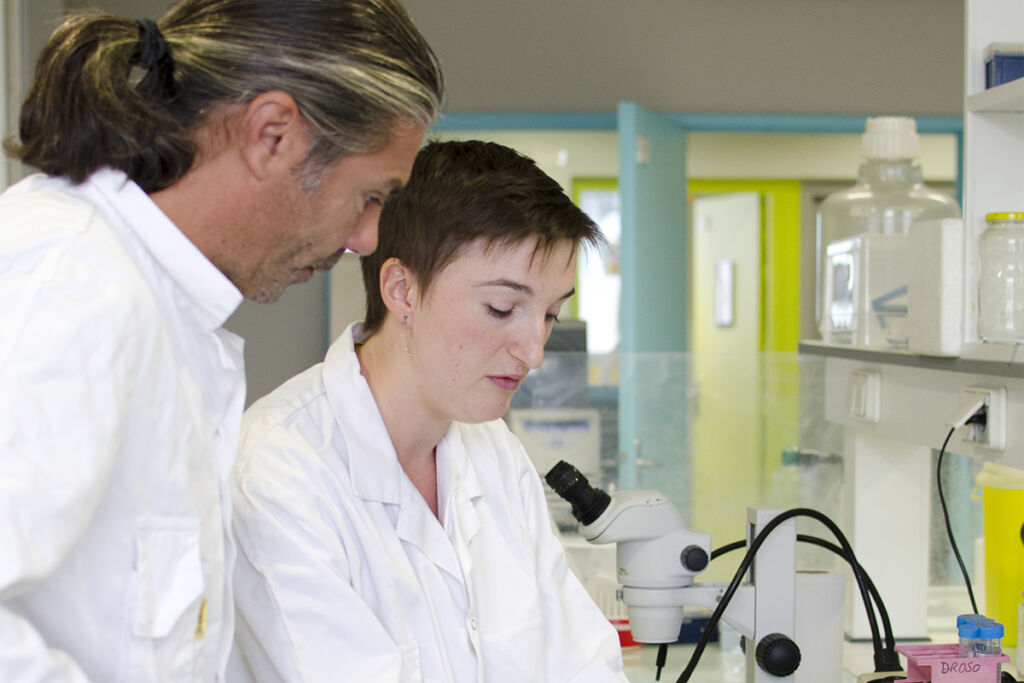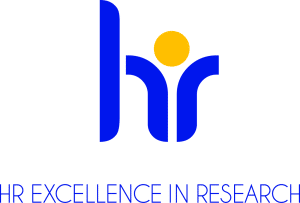More transparent recruitment with the HR Excellence in Research label
The University of Montpellier has made its recruitment policy for researchers and staff public by publishing its OTM-R charter. This initiative is part of the renewal of the European HR Excellence in Research label , which is the result of the UM's human resources strategy for research (HRS4R). This strategy, which has been in place since 2015, aims to better support researchers in their careers, promote working conditions and mobility for researchers, and enhance the university's attractiveness.

"This isn't a revolution in our recruitment methods, but it's another step towards greater transparency," says Frédérique Gerbouin, head of recruitment, training, and support in the human resources department, about the publication of the OTMR recruitment charter. OTM-R stands for open, transparent , and merit-based recruitment. The manager prefers to qualify this literal translation: "Merit doesn't mean quite the same thing in English and French, so it should be understood as recruitment based on objective criteria of competence. Initially designed for the recruitment of researchers, this charter has been extended to all UM staff, and will soon be extended to its doctoral students, and made available for consultation by all on the institutional website.
Facilitating recruitment and harmonizing practices
The primary objective of this OTM-R charter is to improve the clarity and comprehensibility of the various stages of recruitment at UM—from submitting an application to starting the job—and to make job offers accessible to all candidates, whether internal or external to the institution, French or non-French speaking, by practicing "internationalization at home,"i.e., internationalization within the institution to better meet the needs of diverse audiences. This involves, in particular, increasing the amount of information available in English, explains Nathalie Modjeska, HRS4R project manager, who is also responsible for MUSE's international programs. It is a quality approach, the idea being to recruit the best-qualified person by opening up the field of applications as widely as possible, particularly internationally. This approach contributes to the implementation of our human resources strategy and has earned us the HR Excellence in Research label."
The institution did not wait until 2020 to apply these recruitment principles, which must now be officially published in order to qualify for renewal of the HR Excellence in Research label , a scheme created in 2008 by the European Commission to recognize research institutions that apply the European Charter for Researchers and the Code of Conduct for the Recruitment of Researchers (C&C), two Commission documents aimed at harmonizing research practices in order to facilitate mobility and careers in the European Research Area. "Research is highly collaborative internationally, so facilitating the mobility of researchers seems logical," adds the training and support manager.
To this end, UM has adopted a human resources strategy for research (HRS4R), led by Jacques Mercier, Vice President for Research, and involving more than 13 departments. In March 2015, UM became the first French university to receive this certification for a period of five years, highlighting its excellence in human resources for research. "Paradoxically, this label is often overlooked and undervalued by faculty members. Yet this project was initially designed for them. It aims to improve their working conditions, promote their mobility within the European Union, and better support their careers," explains Nathalie Modjeska.
A label for research

This certification is beneficial to UM researchers in a number of ways, starting with access to European funding. "When scores are equal, priority for funding will be given to European project proposals submitted by certified institutions. " The certification of the institution also meets the European Commission's requirements regarding the obligation of institutions receiving European funds to implement a human resources strategy aligned with C&C (Article 32 under the Horizon 2020 program). It therefore plays an essential role in securing European funds obtained by researchers at the University of Montpellier, amounting to approximately €10 million per year.
This label also contributes to significantly improving the institution's attractiveness nationally and internationally by giving greater visibility to job offers published by the UM. "Thanks to the HR Excellence in Research logo displayed on the job offers we publish, we stand out as a good employer that cares about working conditions. Not to mention the fact that it increases the visibility of our ads published on the Euraxess platform. Euraxess platform, as they are automatically reproduced in Nature and Sciences ," continues Nathalie Modjeska.
"We need to encourage researchers to use this logo whenever possible, to add it to their signatures and to their responses to European calls for tenders," adds Frédérique Gerbouin. " We support them in publishing their job offers to highlight this label. It can really make a difference!" A toolkit has also been created on the intranet to guide them through this process.
A three-year renewal
The application was submitted to the European Commission in December 2020 and published on the UM website. Representatives of researchers and teacher-researchers, members of the HRS4R Steering Committee, were consulted throughout the process, notably during an interactive workshop organized in November 2019. "Europe really expects researchers to be involved in this process, " says the project manager. Together, we thought about possible improvements in the practice of their professions. Many suggestions were put forward and, for the most part, they have been turned into actions in the new 2020-2023 plan (see box)."
Now it remains to convince members of the scientific community to embrace this new system: "Among the objectives of the new plan are the continued digitization and administrative simplification at UM and efforts to harmonize procedures with research organizations on aspects that can be addressed locally. In fact, joint research units operate with as many tools, processes, and schedules as they have supervisory bodies! This is a measure that could facilitate the work of the teams,"conclude Frédérique Gerbouin and Nathalie Modjeska. The results of the evaluation of the renewal application by three European experts will be known in several months, following an audit scheduled to take place in thesecond quarter of 2021. To be continued!
A 23-point action plan
- Theupdated version for the period 2020-2023 sets out 23 actions, many of which are already underway or have already been completed.
- The policy to attract young researchers, post-docs, and established researchers (action 16);
- Promoting teaching by creating an award for teaching based on the model of the award for innovation (action 17);
- Raising awareness among employees about developing a personalized career plan, as explained by Virginie Fattore, career advisor, in this video (action 19).
New features include:
- The launch of mixed workshops designed to promote exchange and understanding between researchers at different levels or with administrative and technical staff (action 5);
- The pursuit of digitization and administrative simplification (action 6);
- The creation of a committee for the harmonization of procedures and closer ties with research organizations (action 7);
- The dissemination and application of OTM-R principles through training and monitoring in the annual social report (action 9);
- The pursuit of greater gender balance through the equality plan (action 12);
- Establishing better communication on career progression and tenure timetables and procedures (action 18);
- A range of training courses for the development of managerial skills offered to all managers of structures, departments, and services (action 23).